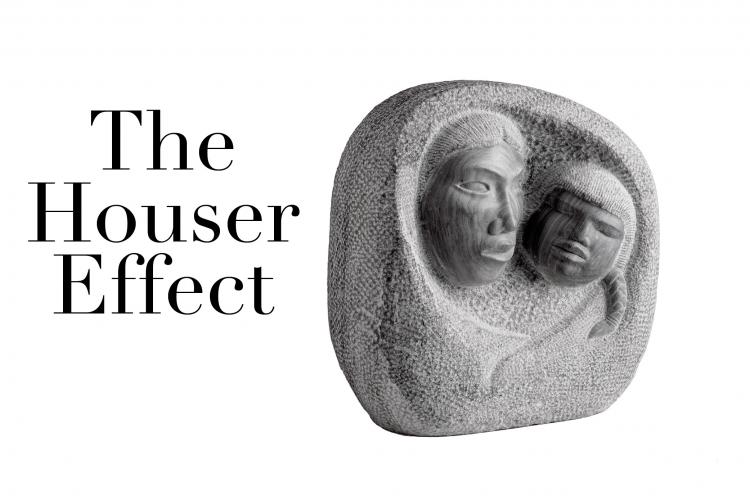 My Child by Allan Houser, 1967. Copyright Chiinde LLC. Photo by Wendy McEahern, courtesy of Gilcrease Museum.
My Child by Allan Houser, 1967. Copyright Chiinde LLC. Photo by Wendy McEahern, courtesy of Gilcrease Museum.
Allan Haozous was born June 30, 1914, near Apache and Fort Sill in southwestern Oklahoma, lands the imprisoned Warm Springs Chiricahua Apache band were forced into years following the surrender of Geronimo. At his birth, Haozous held the distinction of being the first of his family to be born outside of captivity since 1886. In time, he would become Allan Houser, an artist world-renowned for sculpture that pushed both Native American and Modern art into higher spheres of expression.
His work, from traditional to abstract, is part of prestigious art collections all over the country and world, including the National Portrait Gallery and the National Museum of American Art, both in Washington, D.C.
Like many other museums and institutions across Oklahoma, Gilcrease Museum celebrates the centennial of the Oklahoma artist’s birth with a special exhibition of work revealing his adept hand at both drawing and sculpture as well as his evolution in abstraction. Form and Line: Allan Houser’s Sculpture and Drawings opens Thursday, Feb. 13. The exhibit will feature Houser’s stone sculptures and charcoal drawings (demonstrating an ease moving between different media) as well as his sketchbooks filled with conceptual drawings, ideas and energy that found a way into his work.
Much of the exhibit is work loaned by Allan Houser, Inc., the artist’s estate in Santa Fe, N.M. Houser, the recipient of numerous awards and honors – including a Guggenheim Fellowship and the National Medal of Arts – died in Santa Fe at the age of 80 in 1994.
Form and Line: Allan Houser’s Sculpture and Drawings runs through June 29 at 1400 N. Gilcrease Museum Road. In addition to demonstrating the artist’s prolific power to create, it also reveals an appetite for perspective and a new era for both American art and Native American art.
Go to www.gilcrease.utulsa.edu for museum hours and a schedule of programming.
























